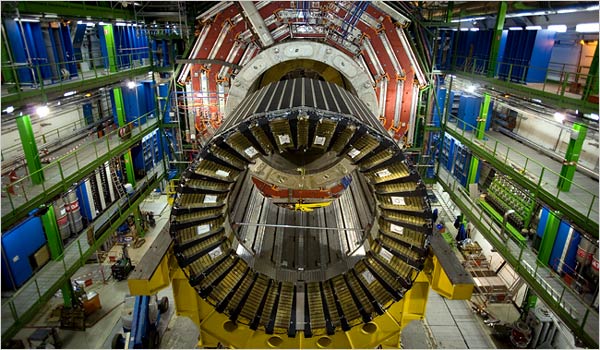LHC Coverage
One of the Large Hadron Collider’s detectors, the Compact Muon Solenoid (CMS).
As you gather a lot when there are discussions on the topic here and elsewhere, there’s a lot of excitement and anticipation among high energy physicists about a number of things. I would go as far as to say that we are already in a very rich experimental time for results pertaining to high energy physics (or, if you insist, “fundamental physics” issues (I have in mind, for example, all the wonderful cosmological and astrophysical data that continues to come in, with more to come), and it is set to possibly get much richer – maybe even a new Golden Age with a little bit of luck – when the Large Hadron Collider starts producing results. We are really going into the (relative) unknown with this experiment, and this will be a great time to be working in the field – with a little luck, as I keep repeating.
A number of substantial articles have recently appeared in the general media that give you a good sense of what is going on, more reasons (and more detail) for why there is […] Click to continue reading this post




